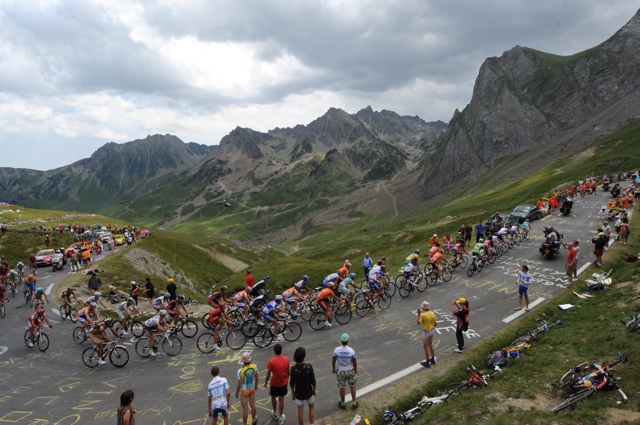Your guide to the Tour de France in the Pyrenees
After a testing first week, the Tour de France heads to some more challenging landscapes as the race heads south to the Pyrenees and the first mountain stages

Tourmalet on stage 16, Tour de France 2010
Week one of the Tour de France is over and it's taken a fair number of casualties along the way.
After the much needed rest day in Pau, the riders will be thrown straight back into the tough racing with a 167km stage from Tarbes. While the first 152 of those kilometres are pretty innocuous, the stage hosts the first summit finish of the Tour at La Pierre-Saint-Martin.
That testing climb is just a warmup, though, as the following day features two iconic Tour de France climbs. The Col d'Aspin pops up 105km into the route, followed immediately afterwards by the daunting Col du Tourmalet.
While the Tour has crossed the 17km Tourmalet 79 times in its history, it has only finished atop it on two occasions. Once again the race flies down the other side of the mountain and finishes with a punchy climb up to Cauterets.
The last day in the mountain range sees the second hors categorie finish, this time at the Plateau de Beille, a challenge in itself, let alone after having tackled the category one Col de la Core and and Port de Lers on the way.
For the general classification contenders, the high mountains will be a good chance to test their legs, show their strength and, for some, try and gain back the time they've lost in the first week.
Cycling Weekly looks at the contenders for the 2015 Tour de France
The latest race content, interviews, features, reviews and expert buying guides, direct to your inbox!
Stuart Clarke is a News Associates trained journalist who has worked for the likes of the British Olympic Associate, British Rowing and the England and Wales Cricket Board, and of course Cycling Weekly. His work at Cycling Weekly has focused upon professional racing, following the World Tour races and its characters.